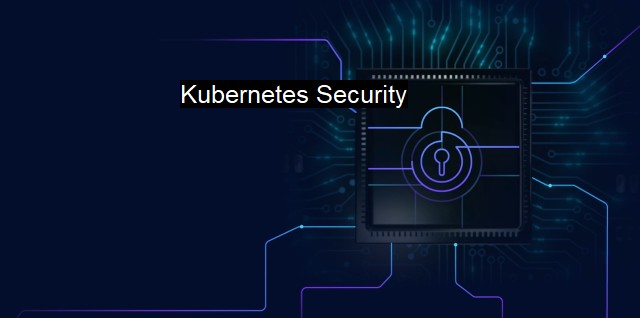What is Kubernetes Security?
Mastering Kubernetes Security: A Comprehensive Guide for Cybersecurity and Antivirus - Best Practices and Strategies for Safeguarding Your Workloads
Kubernetes, often stylized as K8s, is an open-source platform that is fundamentally designed to automate various aspects of application development, such as deploying, scaling, and managing containerized applications across clusters of hosts. Kubernetes Security, therefore, pertains to the range of practices and measures that are carried out to protect Kubernetes systems and their related applications from malicious perpetrators and assorted cybersecurity threats. This manifestly underscores the relevance of Kubernetes Security within the realm of cybersecurity and antivirus contexts.While Kubernetes makes it easy for developers to run large-scale distributed systems, its complexity also entails numerous security risks. Kubernetes embraces a multi-layered, in-depth strategy covering everything from the infrastructure and platform layers to the application and code levels. These dimensions deal with diverse types of potential threats so that even if cybercriminals manage to bypass one layer, other security layers may potentially thwart their unauthorized efforts.
At the infrastructure level, it's crucial to protect your environment from threats. This may involve preventing access to API servers, which are known to receive and process requests within a Kubernetes environment. API servers control communication within the clusters and hold significant functionality rights, making them potential targets for attackers. Exploiting API servers could trigger rogue commands or unauthorized deployment of service.
Nodes, the individual machines in a cluster that host applications, are other potential security vulnerabilities. Preventing unauthorized communication between nodes and API servers could protect the infrastructure of Kubernetes facilities. Using Transport Layer Security (TLS), which encrypts communication, is generally recommended. Multiple network policies should be utilized to restrict traffic flow between Kubernetes pods as an additional safeguard.
At the platform level, security measures are implemented to safeguard the orchestration environment. Kubernetes configuration files should be created securely and compliant with the principle of least privilege. That is, only the minimum necessary permissions should be granted to individual entities to prevent misuse of permissions.
Secrets management involves handling and storing sensitive data like passwords, tokens, and keys securely within Kubernetes. Developers should avoid embedding secrets in application codes or creating plain text configMaps. Kubernetes allows encrypting data at rest and in transit. Implementing secret objects to store and manage such information instead of configMaps is generally advocated.
Meanwhile, at the application level, ensuring the safety of the applications running in the pods is explicit. Containers should run on a minimal footprint, and images should be obtained from known and trusted sources. Efficient logging, monitoring, and regular vulnerabilities scanning of container images should be implemented to spot and troubleshoot undesired behavior.
Last but not least, on a code-level, application code should be developed with security as a priority. These might include regular checks for code vulnerabilities, secure coding practices, and implementing checkpoints before the deployment of new code.
Kubernetes itself takes substantial steps to remain secure by frequently updating its security features. Constant vigilance in monitoring and upgrading to more recent versions is crucial to ensure that your environment benefits from the latest Kubernetes security mitigations.
Implementing multi-factor authentication and Role-Based Access Control (RBAC) can also prove handy to maintain safe administration of clusters. RBAC uses the "deny-all" and "restrict to minimum" policies to manage permissions effectively. Pod Security Policies, which define conditions that all containers in the system must adhere to, can enforce secure defaults pod deployments.
Kubernetes Security is about building, deploying, and managing applications securely in a Kubernetes environment. While Kubernetes' complex nature may suggest potential vulnerabilities, it should be remembered that the system prioritizes security across multiple levels. By understanding the nature of Kubernetes security and following best practices, developers and stakeholders can ensure that their applications and clusters are not just robust and flexible, but increasingly secure as well.

Kubernetes Security FAQs
What is Kubernetes security?
Kubernetes security refers to the measures taken to secure the container orchestration platform, Kubernetes, and its associated resources against cyber threats.What are the common risks associated with Kubernetes security?
Some common risks associated with Kubernetes security include compromised container images, misconfigured settings, lack of network isolation, exposed API server, and unauthorized access.How can I secure my Kubernetes cluster?
Some ways to secure your Kubernetes cluster include enforcing access controls, limiting network access, implementing resource quotas, using secure container images, and regularly updating Kubernetes and its associated components. It is also recommended to perform regular security audits and vulnerability assessments.Are there any Kubernetes security tools available?
Yes, there are several Kubernetes security tools available, including Aqua Security, Sysdig Secure, Twistlock, and Falco. These tools can help with intrusion detection, vulnerability scanning, policy enforcement, and overall security monitoring of your Kubernetes cluster.| | A | | | B | | | C | | | D | | | E | | | F | | | G | | | H | | | I | | | J | | | K | | | L | | | M | |
| | N | | | O | | | P | | | Q | | | R | | | S | | | T | | | U | | | V | | | W | | | X | | | Y | | | Z | |
| | 1 | | | 2 | | | 3 | | | 4 | | | 7 | | | 8 | | |||||||